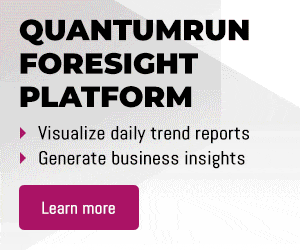Endless media: The never-ending scroll
Endless media: The never-ending scroll
Endless media: The never-ending scroll
- Author:
- April 8, 2025
Insight summary
Endless media’s constant flow of content is making it harder to focus, increasing boredom, and raising concerns about mental health. Businesses are using engagement-driven strategies to keep users online longer, but as digital addiction becomes a growing issue, companies may face more regulations and pressure to change their models. Meanwhile, governments are considering new policies to address both the social and environmental impacts of endless media, from restricting access for minors to encouraging energy-efficient data centers.
Endless media context
Endless media, characterized by infinite scrolling, autoplay features, and algorithmically curated content, has reshaped how people consume information and entertainment. Initially designed to enhance engagement, these features have raised concerns about their effects on mental health, attention spans, and even environmental sustainability. The American Psychological Association (APA) highlighted in a 2024 report that social media platforms employing endless scrolling are particularly risky for young users, as their developing brains struggle to disengage from these immersive digital experiences. Meanwhile, researchers from the University of Toronto suggest that digital media, instead of alleviating boredom, has intensified it by fragmenting attention and increasing the desire for constant stimulation.
Studies indicate that endless media consumption contributes to rising levels of boredom, particularly among younger generations. A meta-analysis of Chinese college students from 2009 to 2020 found a significant increase in boredom proneness, mirroring findings from a US study of 100,000 secondary school students reporting higher boredom levels since 2010. Researchers argue that digital content overload disrupts deep engagement, making traditional activities like reading or reflection less satisfying. This cycle is compounded by social media’s dopamine-driven design, which conditions users to seek frequent but unsatisfying bursts of entertainment, ultimately reinforcing a sense of restlessness.
Beyond psychological effects, the environmental impact of endless media consumption is drawing attention. Doom scrolling, the compulsive refreshing of social media and news feeds, depends on data centers that consume significant amounts of electricity. The International Energy Agency estimates that data centers account for 1 percent of global electricity use, a figure expected to rise as online activity grows. According to CyberNews, an hour on social media generates approximately 6 grams of carbon dioxide emissions, while an hour of video streaming emits around 55 grams. In response, companies like Microsoft and Google are investing in carbon-efficient cloud solutions to reduce their emissions, while some platforms are introducing low-energy modes to cut data transfer rates. However, experts suggest that both industry initiatives and user awareness will be necessary to mitigate the broader impacts of endless media consumption.
Disruptive impact
As people rely on infinite scrolling and autoplay features, attention spans may decline, making it harder to focus on complex tasks. However, endless media also allows individuals to stay informed, connect with global communities, and access real-time updates on critical issues. Over time, people may need to adjust their digital habits, balancing online engagement with offline activities to maintain productivity and mental health.
For businesses, endless media is a powerful tool for customer engagement, but it also presents operational and ethical challenges. Social media companies rely on engagement-driven algorithms to increase ad revenue, which may push them to prioritize content that keeps users hooked, even at the expense of their well-being. Meanwhile, industries like e-commerce and entertainment are finding new ways to integrate endless media into their strategies, such as interactive shopping feeds or personalized video recommendations. Companies may need to consider the long-term impact of these models, especially as regulatory scrutiny around digital addiction grows. Some platforms have already introduced time-limit notifications, but stronger consumer protections may be required as digital consumption habits evolve.
Governments are under growing pressure to regulate endless media while balancing economic interests and public health concerns. Policies aimed at limiting social media addiction, such as Florida’s 2024 law restricting access for minors, may expand to other regions. Some governments may also invest in energy-efficient infrastructure or introduce sustainability requirements for tech companies operating within their borders. As artificial intelligence (AI)-driven content becomes more prevalent, regulatory bodies may also need to develop policies that ensure transparency and prevent misinformation from spreading through endlessly generated content.
Implications of endless media
Wider implications of endless media may include:
- Increased demand for data storage, leading to greater investments in energy-efficient data centers and cloud computing.
- Social media companies adapting business models to focus on premium, ad-free subscriptions as users seek alternatives to endless scrolling.
- Governments funding research on the psychological effects of constant digital engagement, shaping future public health campaigns and education programs.
- Political campaigns relying more on algorithm-driven content distribution, making it harder for voters to distinguish between organic discussions and targeted messaging.
- The labor market shifting as content moderation and digital well-being roles expand, creating new job opportunities in tech policy and online platform oversight.
- Advertising strategies becoming more dependent on short-form, high-engagement content, pushing brands to create interactive and fast-paced promotions.
- Media companies developing AI-driven tools to summarize news in real time, changing how people consume long-form journalism and in-depth reporting.
- Schools and universities incorporating digital literacy training into curriculums, teaching students how to manage screen time and evaluate endless content feeds critically.
- The entertainment industry producing more immersive and personalized content, with streaming services using endless media techniques to retain subscribers longer.
- Environmental concerns prompting tech companies to introduce low-energy browsing modes, reducing the carbon footprint of prolonged digital consumption.
Questions to consider
- How does endless media affect the way you manage your time and maintain focus on important tasks?
- How could businesses balance engagement-driven content with user well-being without hurting their revenue?
Insight references
The following popular and institutional links were referenced for this insight:



